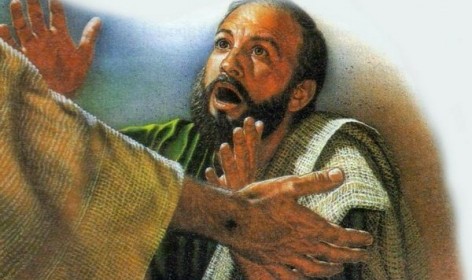
3 Words that will forever change the way you read the Gospel of John: Week 20
- January 11, 2015
- / Category 3 Words that will forever change the way you read the Gospel of John, John 20
- / Posted By Kevin Bennett
- / No Comments.
Contents
Chapter 20
 This is part 20 of a 21-part series which traces “seeing” and “hearing”, and looks at how they relate to “believing”, through the Gospel of John.
This is part 20 of a 21-part series which traces “seeing” and “hearing”, and looks at how they relate to “believing”, through the Gospel of John.
In Chapter 20 we start to draw the major themes together in some very dramatic ways. This chapter has a lot of “seeing” in it, which finally points us back to a “belief” which dies not rely on seeing.
REVIEWING THE TEXT – CHAPTER 20
Seeing
I don’t want to spend too much time on the notion that John has used the “light/dark” theme powerfully here, depicting a “dawning” throughout the chapter. The chapter begins in the “dark”, and later is at the end of the day (which gets translated “evening“, but more likely means late afternoon because sunset was considered the end of a day). I only mention it because it subtly relates to the way John uses “seeing” in this chapter.
| something has changed here |
Here is a paraphrase of the first ten verses, clipped and highlighted so that the theme of “seeing” is clearly discernible:
Early on the first day of the week, while it was still dark, Mary Magdalene came to the tomb and saw that the stone had been removed from the tomb. So she ran and went to Simon Peter and the other disciple, the one whom Jesus loved, and said to them, “They have taken the Lord out of the tomb, and we do not know where they have laid him.” Then Peter and the other disciple set out and went toward the tomb. The two were running together, but the other disciple outran Peter and reached the tomb first. He bent down to look in and saw the linen wrappings lying there, but he did not go in. Then Simon Peter came, following him, and went into the tomb. He saw the linen wrappings lying there, and the cloth that had been on Jesus’ head, not lying with the linen wrappings but rolled up in a place by itself. Then the other disciple, who reached the tomb first, also went in, and he saw and believed; for as yet they did not understand the scripture, that he must rise from the dead. Then the disciples returned to their homes.
– John 20:1-10
Previously in the Gospel of John, what one “sees” can be deceptive, and will lead to improper belief. Anyone following this study series will by now be quite familiar with that phenomenon.
But something has changed here. In this case, everything they “saw” was true, and would lead them to proper belief, if only they accepted it. John himself (“the other disciple, the one whom Jesus loved” from verse 2), was the first one to believe based on what he saw. The others were still struggling. Why? Because “as yet they did not understand the scripture, that he must rise from the dead” (v9).
So what’s different? Remember the study on Chapter 11?
Everything changed when a man was raised from the dead.
That’s the difference.
Mary Magdalene Sees and Hears
| The chapter begins in the “dark” |
So let’s proceed to the next block of text and note something else… Whereas Peter had looked in, and John had gone in, neither of them had seen any more than grave clothes in the tomb. What does Mary see? Angels!
Now watch the fascinating interplay of seeing, hearing, and believing:
But Mary stood weeping outside the tomb. As she wept, she bent over to look into the tomb; and she saw two angels in white, sitting where the body of Jesus had been lying, one at the head and the other at the feet.
They said to her, “Woman, why are you weeping?”
She said to them, “They have taken away my Lord, and I do not know where they have laid him.”
When she had said this, she turned around and saw Jesus standing there, but she did not know that it was Jesus.
Jesus said to her, “Woman, why are you weeping? Whom are you looking for?”
Supposing him to be the gardener, she said to him, “Sir, if you have carried him away, tell me where you have laid him, and I will take him away.”
Jesus said to her, “Mary!”
She turned and said to him in Hebrew, “Rabbouni!” (which means Teacher).
Jesus said to her, “Do not hold on to me, because I have not yet ascended to the Father. But go to my brothers and say to them, ‘I am ascending to my Father and your Father, to my God and your God.’” Mary Magdalene went and announced to the disciples, “I have seen the Lord”; and she told them that he had said these things to her.
– John 20:11-18
Ok, but… what??? This is surely a very weird mix of seeing, hearing, and believing…
Let’s follow it through: Mary “looks”, and sees angels where the men had seen nothing. Clearly there is something being said here about Mary Magdalene’s special place in the faith. Feminist theologians should delight at this, but that’s not the point of our study. The point is that she clearly is being “shown” divine mysteries in a way that the men were not. How odd, then, that she doesn’t recognise Jesus…
Jesus speaks to Mary and she doesn’t recognise his voice even after having seen him (Verse 14)! Until, that is, he speaks her name. This would seem, in contrast to the previous couple of verses, to be rather a dim indictment of Mary’s faith in the scheme of the whole seeing, hearing, believing thing… except that Jesus goes on to announce to her, not to the others, the truth of the Resurrection!
| “evening” should probably be taken as “late afternoon” |
The real key in this section is not in the conversation, which is probably arranged for dramatic effect, rather than for theological meaning. The key is in Mary’s announcement to the others. Initially, it was “I have seen the Lord“, and immediately after that, “she told them that he had said these things“. So we are getting a moving-together of the “seeing” and “hearing (his words)” themes.
Beleiving without Seeing
Poor old “Doubting Thomas” has been derided and lampooned for all Christian history for his lack of faith, but I think that’s unfair, as we will see. Check it out:
When it was evening on that day, the first day of the week, and the doors of the house where the disciples had met were locked for fear of the Jews, Jesus came and stood among them and said, “Peace be with you.” After he said this, he showed them his hands and his side. Then the disciples rejoiced when they saw the Lord.
– John 20:19-20
As a little aside, this is where “evening” should probably be taken as “late afternoon”, as I said above. This is still “the first day of the week”, which is the day on which Jesus rose from the dead, and that day finishes at sunset. So this scene is during the day.
Look at the sequence: Jesus appeared, and spoke, but nobody got it until he had shown them his wounds! Why should be be so hard on poor old Thomas for this:
But Thomas (who was called the Twin), one of the twelve, was not with them when Jesus came. So the other disciples told him, “We have seen the Lord.” But he said to them, “Unless I see the mark of the nails in his hands, and put my finger in the mark of the nails and my hand in his side, I will not believe.”
– John 20:24-25
That’s exactly what the others did!
Of course, the next week Thomas does get to inspect the wounds, and does come to believe. The really important thing is what Jesus says next. He said it to Thomas, but it could just as well have been said to any of the others:
Jesus said to him, “Have you believed because you have seen me? Blessed are those who have not seen and yet have come to believe.”
– John 20:29
Getting to the Point
Finally, John finishes this chapter by saying why he wrote this whole Gospel:
Now Jesus did many other signs in the presence of his disciples, which are not written in this book. But these are written so that you may come to believe that Jesus is the Messiah, the Son of God, and that through believing you may have life in his name.
– John 20:30-31
| John finishes this chapter by saying why he wrote this whole Gospel |
So then, right near the end of the whole book, we finally see the reason why John was so keen to emphasise the theme of “belief”. Indeed, it was the point of the whole book, that the reader might come to believe, and therefore enjoy “life in His name”. No wonder our study in “Seeing”, “Hearing”, and “Believing” has been so fruitful – this was on author’s heart as he wrote the book in the first place.
QUESTIONS TO PONDER FROM CHAPTER 20
The doors of the house were “locked for fear of the Jews” (v19). Why did they fear the Jews?
What significance can we draw from the fact that the first to see Jesus resurrected was a woman, even though two men had been there?
In the final section (verses 30-31), there is a reference to “that you might come to believe”, and also “that you might have life in his name”. Can you think of a single verse in John’s Gospel which includes both of these ideas as a kind of promise? (Hint, it’s a very famous verse…)
Other posts in this series:

Gospel of John
Posted on May 24th, 2012 - By Kevin Bennett - 0 Comments
The Gospel of John: Many people's favourite book, but scholars neglected it for centuries! Historicity Differences between John and the Synoptic…

3 Words that will forever change the way you read the Gospel of John: Week 1
Posted on May 3rd, 2014 - By Kevin Bennett - 0 Comments
Chapter 1: Prologue, and John the Baptist introduces Jesus This is part 1 of a 21-part series which traces "seeing" and "hearing", and looks at…

3 Words that will forever change the way you read the Gospel of John: Week 2
Posted on May 10th, 2014 - By Kevin Bennett - 0 Comments
Chapter 2: Signs This is part 2 of a 21-part series which traces "seeing" and "hearing", and looks at how they relate to "believing", through the…

3 Words that will forever change the way you read the Gospel of John: Week 3
Posted on May 16th, 2014 - By Kevin Bennett - 0 Comments
Chapter 3: Nicodemus, and darkness This is part 3 of a 21-part series which traces "seeing" and "hearing", and looks at how they relate to…

3 Words that will forever change the way you read the Gospel of John: Week 4
Posted on May 23rd, 2014 - By Kevin Bennett - 0 Comments
Chapter 4: The Samaritan Woman, the Harvest, and the Return to Galilee This is part 4 of a 21-part series which traces "seeing" and "hearing", and…
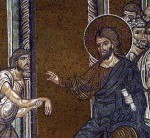
3 Words that will forever change the way you read the Gospel of John: Week 5
Posted on May 30th, 2014 - By Kevin Bennett - 0 Comments
Chapter 5: Sabbath, and the Son of God This is part 5 of a 21-part series which traces "seeing" and "hearing", and looks at how they relate to…

3 Words that will forever change the way you read the Gospel of John: Week 6
Posted on Jun 6th, 2014 - By Kevin Bennett - 0 Comments
Chapter 6: Feeding the 5000, Bread from Heaven, Words of Life This is part 6 of a 21-part series which traces "seeing" and "hearing", and…

3 Words that will forever change the way you read the Gospel of John: Week 7
Posted on Jun 13th, 2014 - By Kevin Bennett - 0 Comments
Chapter 7: The Festival, The Living Water This is part 7 of a 21-part series which traces "seeing" and "hearing", and looks at how they…
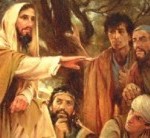
3 Words that will forever change the way you read the Gospel of John: Week 8
Posted on Jun 20th, 2014 - By Kevin Bennett - 0 Comments
Chapter 8: The Adulteress, Light of the World, and Abraham's Sons This is part 8 of a 21-part series which traces "seeing" and "hearing", and…
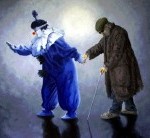
3 Words that will forever change the way you read the Gospel of John: Week 9
Posted on Jun 27th, 2014 - By Kevin Bennett - 0 Comments
Chapter 9: To see This is part 9 of a 21-part series which traces "seeing" and "hearing", and looks at how they relate to "believing", through…
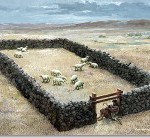
3 Words that will forever change the way you read the Gospel of John: Week 10
Posted on Jul 4th, 2014 - By Kevin Bennett - 0 Comments
Chapter 10: The Voice of the Shepherd This is part 10 of a 21-part series which traces "seeing" and "hearing", and looks at how they relate to…
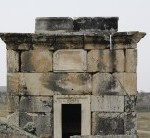
3 Words that will forever change the way you read the Gospel of John: Week 11
Posted on Jul 13th, 2014 - By Kevin Bennett - 0 Comments
Chapter 11: The Resurrection and the Life This is part 11 of a 21-part series which traces "seeing" and "hearing", and looks at how they relate to…

3 Words that will forever change the way you read the Gospel of John: Week 12
Posted on Jul 18th, 2014 - By Kevin Bennett - 0 Comments
Chapter 12: This is part 12 of a 21-part series which traces "seeing" and "hearing", and looks at how they relate to "believing", through the Gospel…

3 Words that will forever change the way you read the Gospel of John: Week 13
Posted on Jul 25th, 2014 - By Kevin Bennett - 0 Comments
Chapter 13 This is part 13 of a 21-part series which traces "seeing" and "hearing", and looks at how they relate to "believing", through the Gospel…
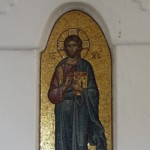
3 Words that will forever change the way you read the Gospel of John: Week 14
Posted on Aug 22nd, 2014 - By Kevin Bennett - 0 Comments
Chapter 14 This is part 14 of a 21-part series which traces "seeing" and "hearing", and looks at how they relate to "believing", through the Gospel…

3 Words that will forever change the way you read the Gospel of John: Week 15
Posted on Sep 5th, 2014 - By Kevin Bennett - 0 Comments
Chapter 15 This is part 15 of a 21-part series which traces "seeing" and "hearing", and looks at how they relate to "believing", through the Gospel…

3 Words that will forever change the way you read the Gospel of John: Week 16
Posted on Sep 19th, 2014 - By Kevin Bennett - 0 Comments
Chapter 16 This is part 16 of a 21-part series which traces "seeing" and "hearing", and looks at how they relate to "believing", through the Gospel…

3 Words that will forever change the way you read the Gospel of John: Week 17
Posted on Oct 3rd, 2014 - By Kevin Bennett - 0 Comments
Chapter 16 This is part 17 of a 21-part series which traces "seeing" and "hearing", and looks at how they relate to "believing", through the Gospel…
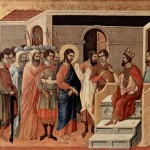
3 Words that will forever change the way you read the Gospel of John: Week 18
Posted on Oct 31st, 2014 - By Kevin Bennett - 0 Comments
Chapter 18 This is part 18 of a 21-part series which traces "seeing" and "hearing", and looks at how they relate to "believing", through the Gospel…
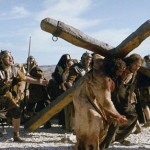
3 Words that will forever change the way you read the Gospel of John: Week 19
Posted on Jan 2nd, 2015 - By Kevin Bennett - 0 Comments
Chapter 19 This is part 19 of a 21-part series which traces "seeing" and "hearing", and looks at how they relate to "believing", through the Gospel…
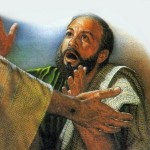
3 Words that will forever change the way you read the Gospel of John: Week 20
Posted on Jan 11th, 2015 - By Kevin Bennett - 0 Comments
Chapter 20 This is part 20 of a 21-part series which traces "seeing" and "hearing", and looks at how they relate to "believing", through the Gospel…
Related
facebook comments:
Recent Posts
- Addiction: How to Help
- … and this just in: News from the Streets of Ipswich. Issue 23
- What Happens When We Die, and Where are my Loved Ones?
- Seeking the Kingdom
- If it is by the Spirit of God that I drive out demons, then the Kingdom of God has come upon you – Matt 12:28
Tags
| S | M | T | W | T | F | S |
|---|---|---|---|---|---|---|
| « May | ||||||
| 1 | 2 | 3 | 4 | 5 | 6 | |
| 7 | 8 | 9 | 10 | 11 | 12 | 13 |
| 14 | 15 | 16 | 17 | 18 | 19 | 20 |
| 21 | 22 | 23 | 24 | 25 | 26 | 27 |
| 28 | 29 | 30 | ||||



